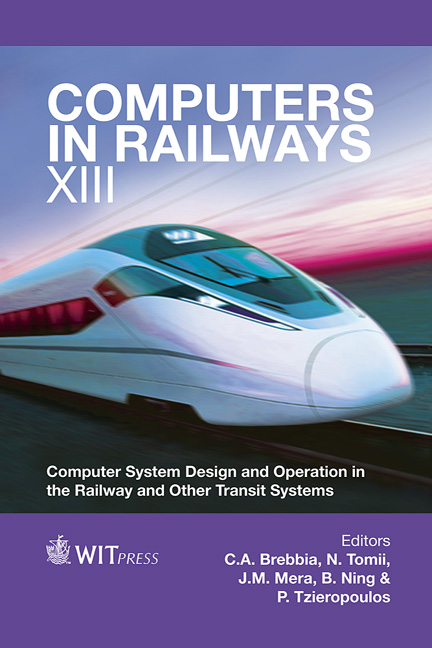From Single To Double Track: Effects Of Alternative Extension Measures
Price
Free (open access)
Transaction
Volume
127
Pages
12
Page Range
313 - 324
Published
2012
Size
2653 kb
Paper DOI
10.2495/CR120261
Copyright
WIT Press
Author(s)
O. Lindfeldt
Abstract
Extension of single-track lines into double-track will be an important part of future rail investments in Sweden. Most Swedish railway lines are single-track and the steady growth in demand for passenger and freight transportation calls for more capacity, which in turn imposes a need for more double-track sections. This paper points out three minor measures that can be taken on single-track lines before they are completely extended into double-tracks: additional crossing loops, extended crossing loops to enable parallel entrance, and partial doubletracks. A generic model for timetable analysis, TVEM (Timetable Variant Evaluation Model), is applied to evaluate the effect of the three measures through generation of 20,000–50,000 alternative timetables. The evaluation shows that none of the measures significantly affect the maximum capacity, i.e. the number of trains in the best timetable alternative. This indicates that the longest inter-loop distance, has to be substantially shortened through either an additional crossing loop or a partial double-track. A parallel entrance facility on a crossing loop does not affect the time distance between adjacent loops so much that it can be considered to increase maximum capacity. However, all three measures result in higher timetable flexibility, i.e. number of timetable variants for a given number of trains (capacity level). Partial doubletracks give much more timetable flexibility than additional crossing loops and parallel entrance facilities on crossing loops. It is reasonable that higher timetable flexibility imposes a higher practical, realizable capacity, since a line section that can be scheduled flexibly is less likely to constrain the overall capacity on the entire line. Keywords: single-track, double-track, crossing loop, scheduling, railway capacity.
Keywords
single-track, double-track, crossing loop, scheduling, railwaycapacity





